
Update 2/16/11 – 25nm OCZ Vertex 2 Review
Update 2/24/11 – OCZ Vertex 3 Review
SandForce rocked the SSD world with the debut of their SF-1200 processor a few months ago. While the Intel X25-M SSD held its own for a long time against the SSDs from most mainstream competitors, SandForce-enabled drives were able to catch up overnight. In this review we take a look at the 120GB OCZ Vertex 2 powered by the SandForce SF-1200 controller.
The Vertex 2 line of SSDs from OCZ are designed for the enthusiast market – those who want top-tier performance. The drives come in capacities from 50GB to 480GB and feature consistent read and writes speeds of 285MB/s and 275MB/s for capacities up to 240GB (the 400GB and 480GB are a little slower at 250MB/s read and 240MB/s write).
The 2.5" drives feature a SATA 3Gb/s interface and thoughtfully, OCZ has included 3.5" rails so the drives can easily be mounted in desktops. The NAND is 34nm MLC flash, the current standard for this class of SSD.
OCZ offers a 3-year warranty with their consumer SSDs, but more importantly, they support their drives with firmware updates. OCZ has recently released a new firmware for the Vertex 2 line, v1.10, which we applied for this review.
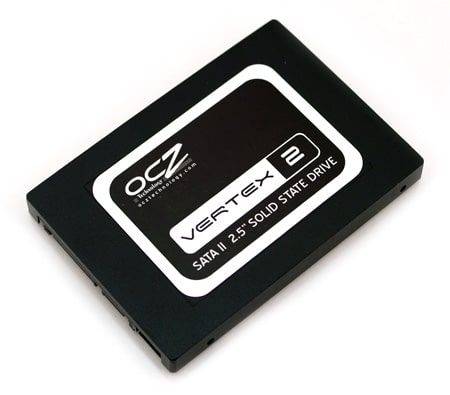
- Available in 50GB to 480GB capacities
- Capacity Reviewed: 120GB (111.79GB Formatted)
- Native TRIM support
- Max IOPS Firmware
- Seek Time: .1ms
- 2.5" Design (comes with 3.5" mounting bracket)
- Lightweight: 77g
- Operating Temp: 0°C ~ 70°C
- Storage Temp: -45°C ~ +85°C
- Power Consumption: 2W in operation,0.5W in standby
- Shock Resistant up to 1500G
- RAID Support
- MTBF: 2 million hours
- 3-Year Warranty
Aesthetics
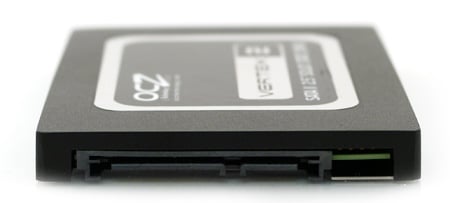

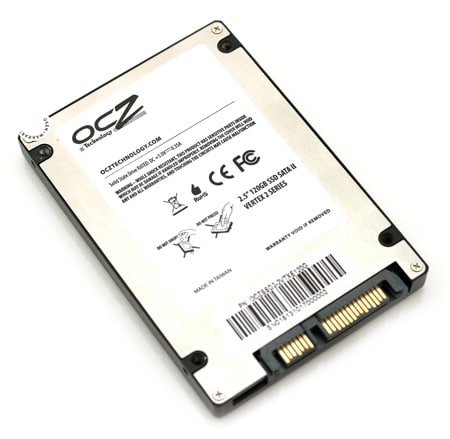
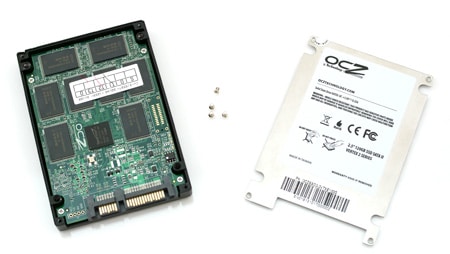
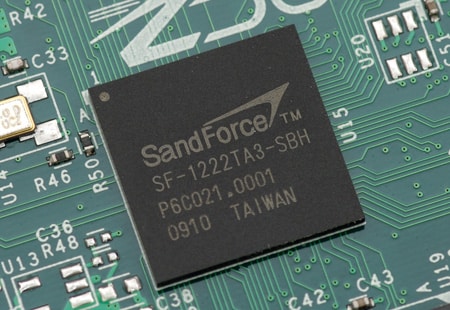
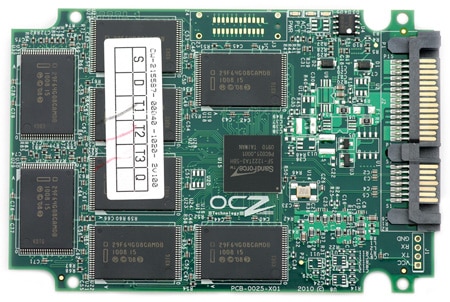
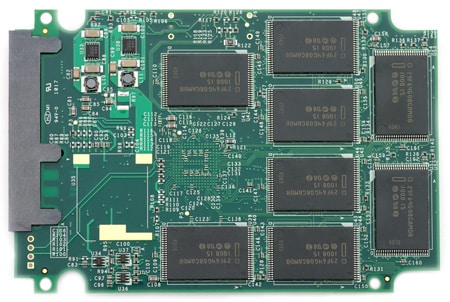
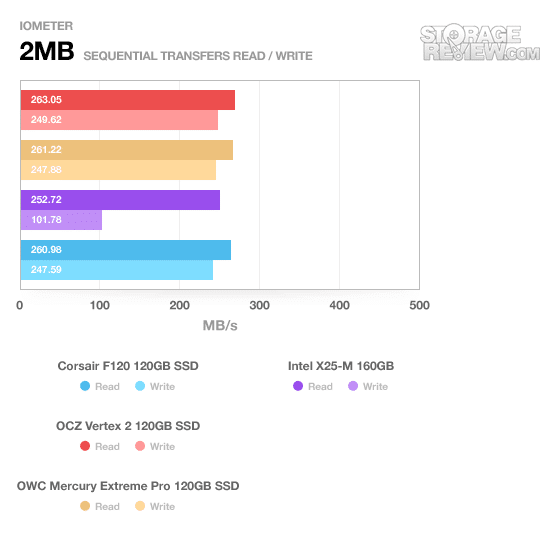
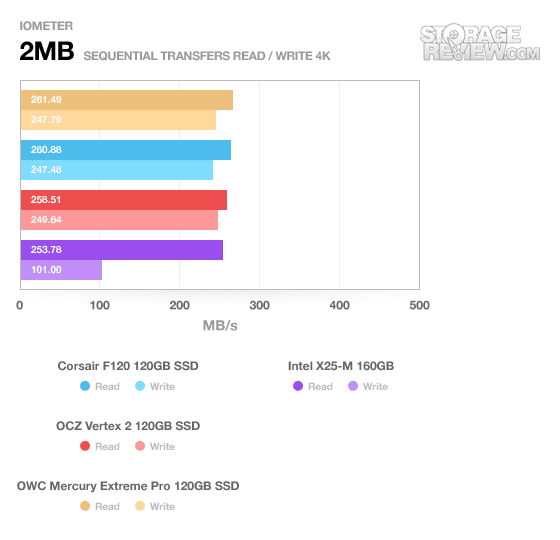
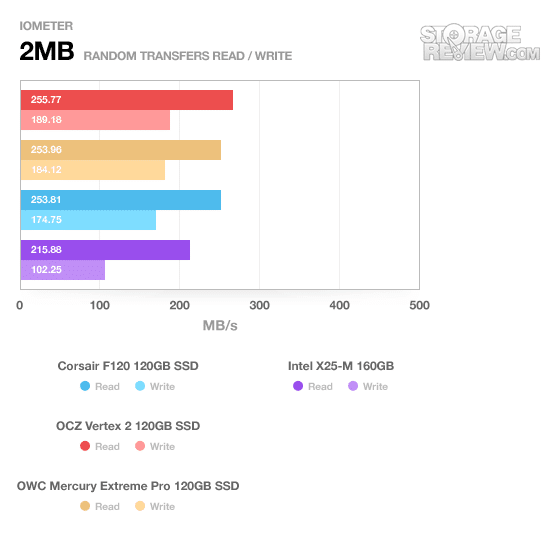
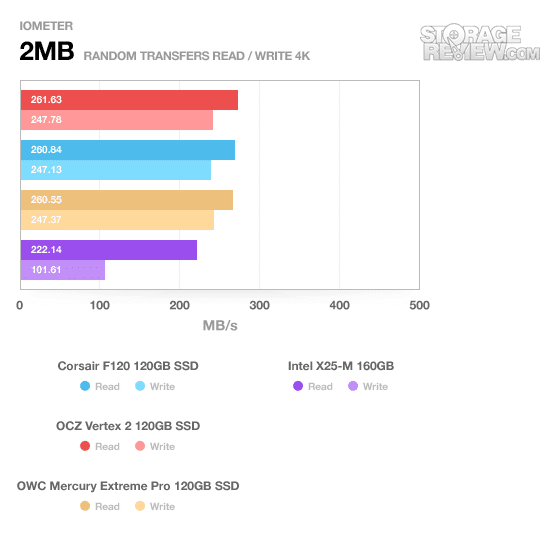
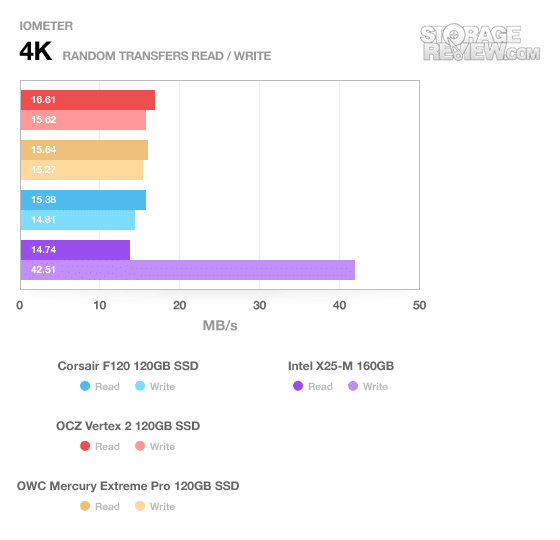
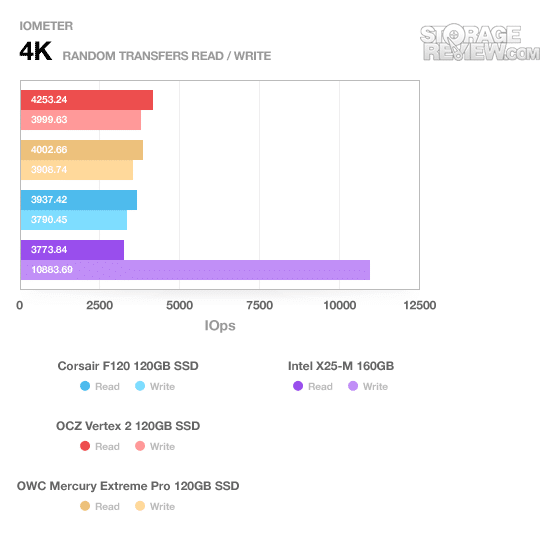
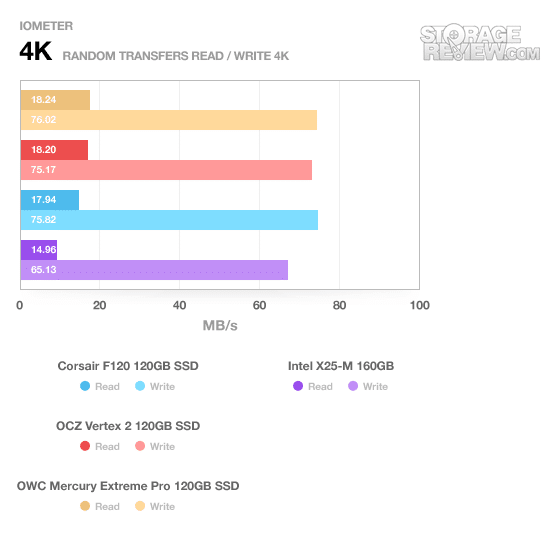
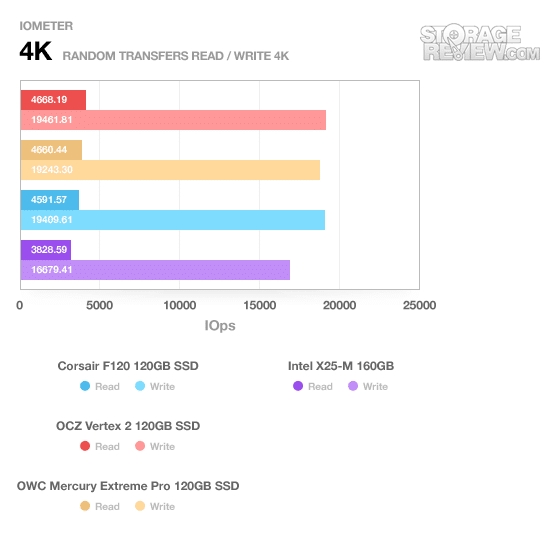
4K write latency was fantastic on the OCZ Vertex 2. We measured an unaligned average response time of 0.26ms and a max response time of 20.89ms.
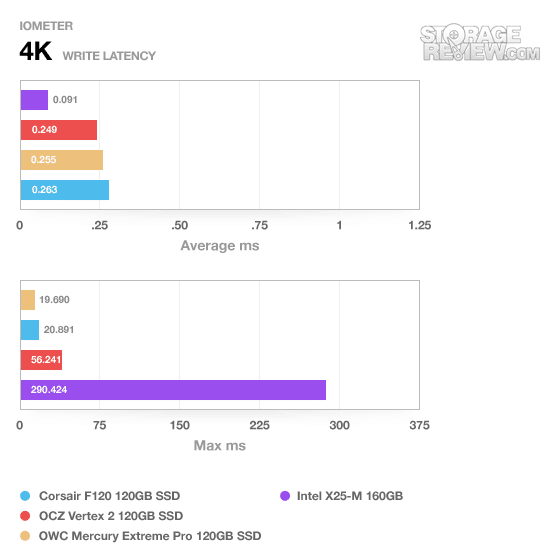
With 4K-alignment average response time dropped to 0.05ms and max response time lowered to 16.3ms.
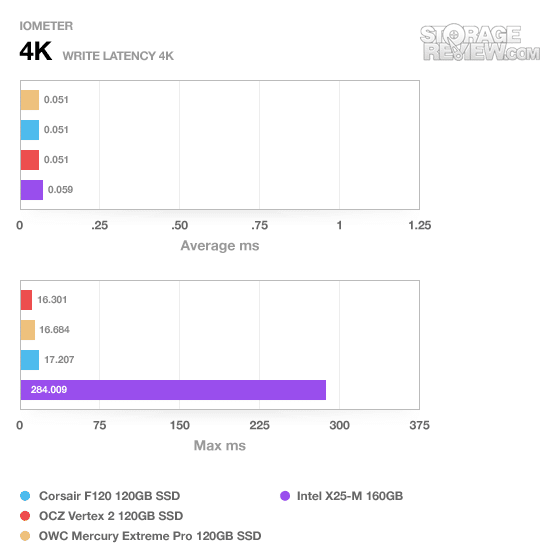
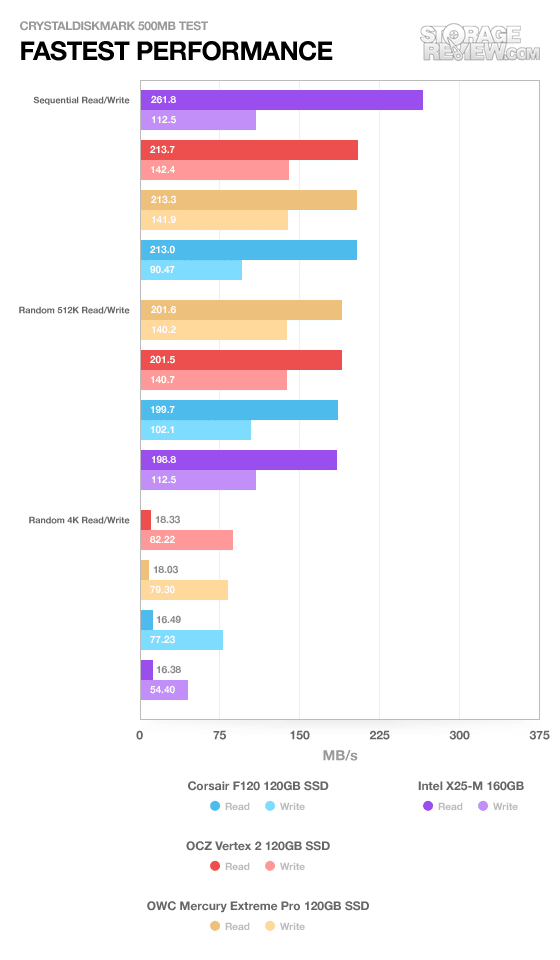
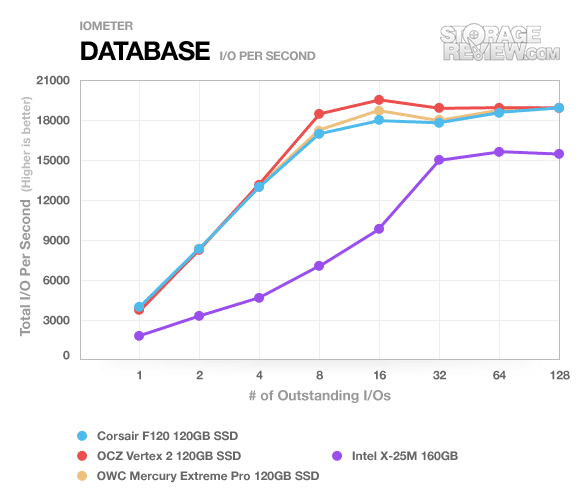
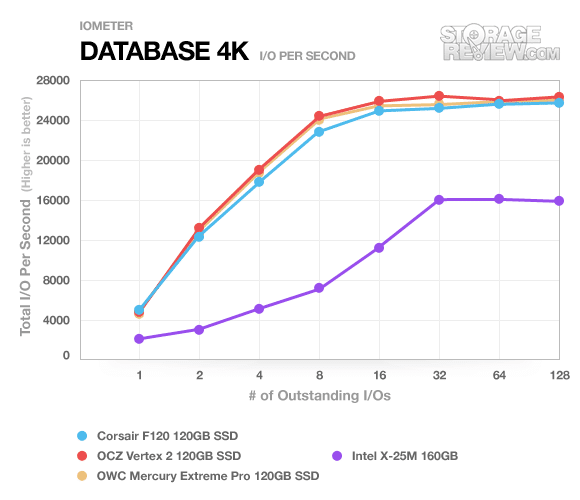
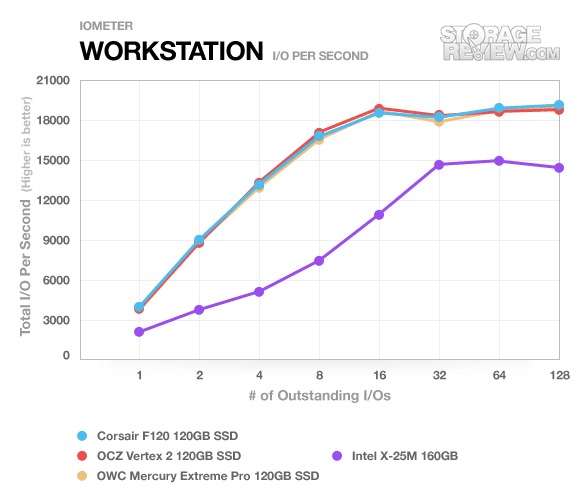
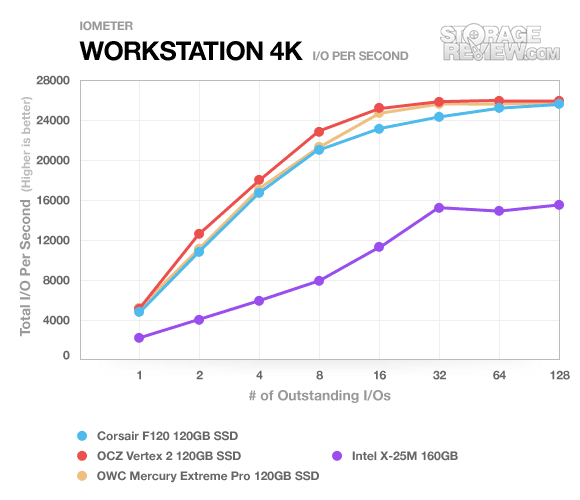
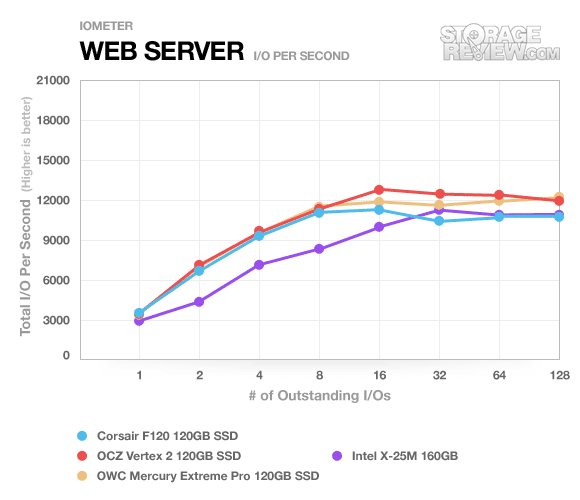
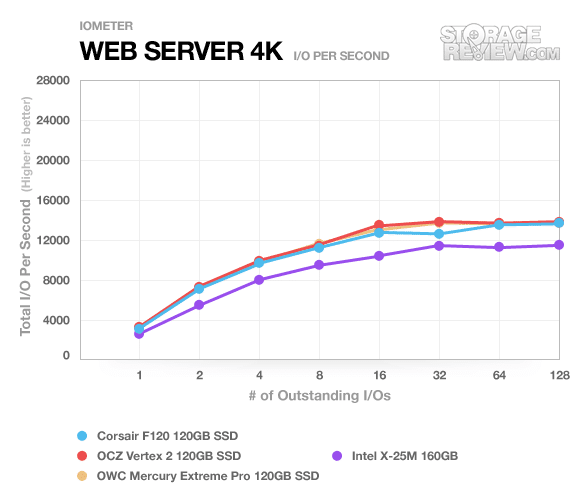
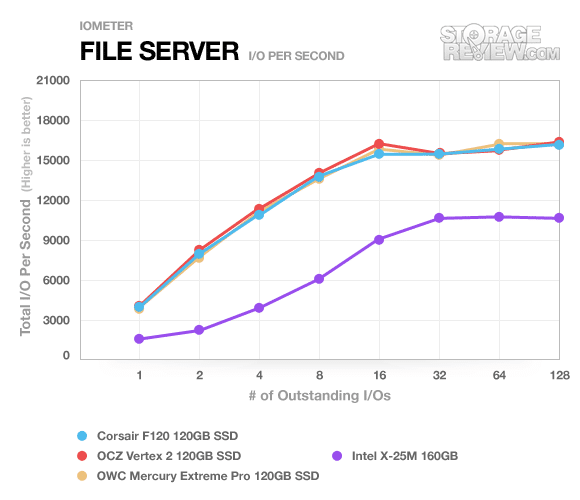
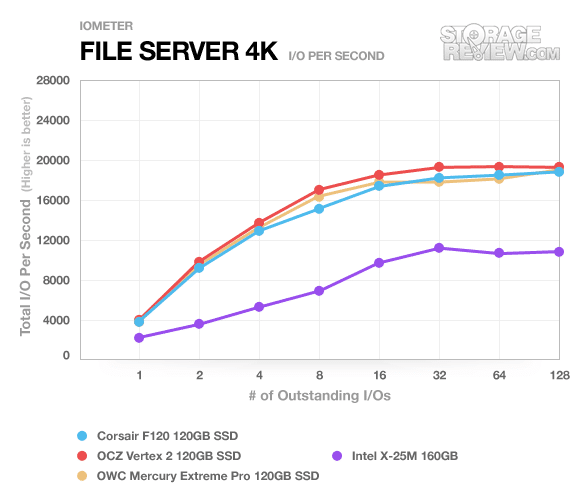
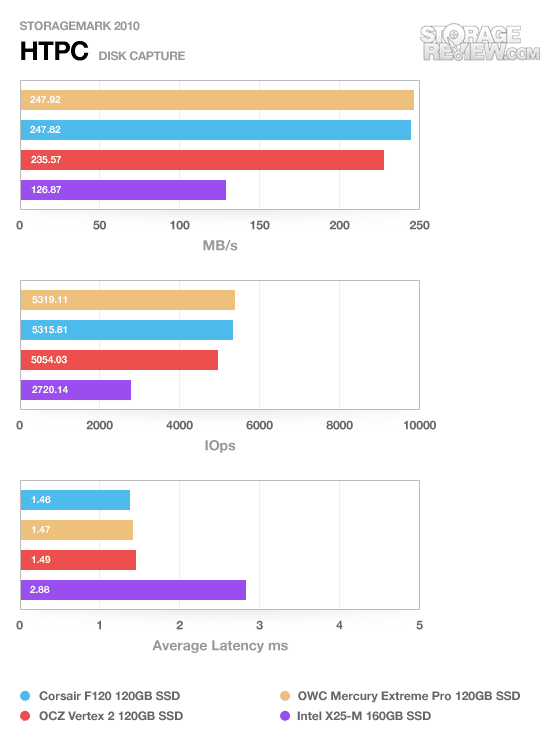
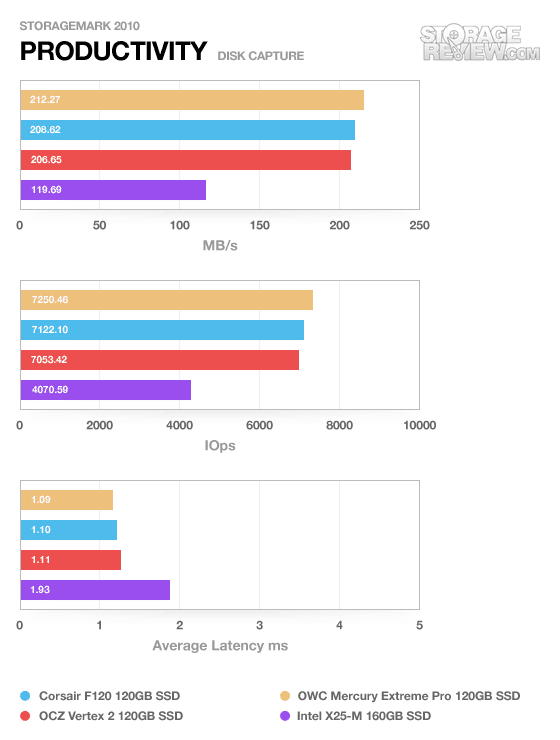
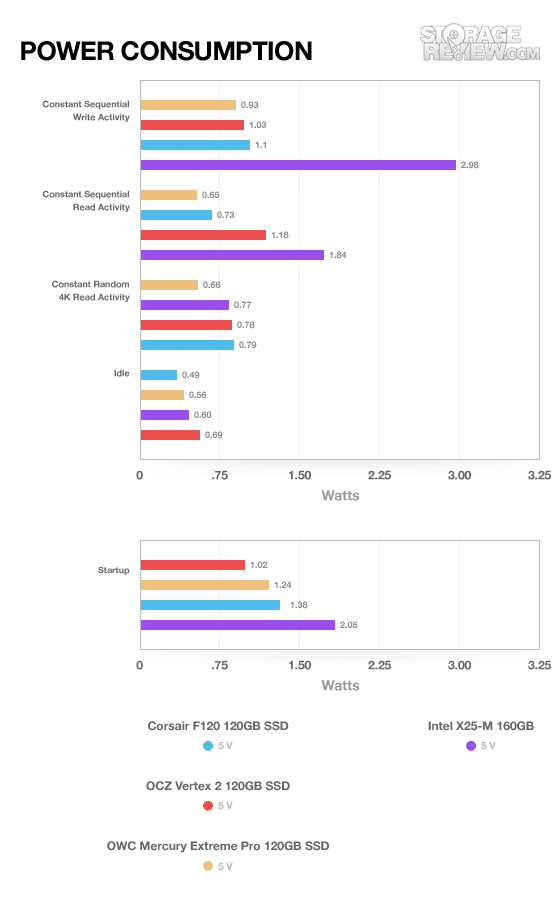
- Very, very fast
- Much lower Read/Write power consumption compared to the Intel X25-M
- Low starting price
- Slightly slower than the Corsair F120 and the OWC Mercury Extreme Pro in real world benchmarks (With latest 1.10 firmware)
- Slightly higher idle and read power consumption than other SandForce models (With latest 1.10 firmware)
